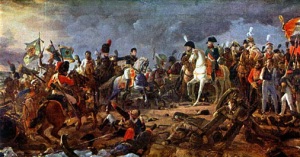Wow. Two weeks in a row and no promised movie review. I could give you lots of excuses. For instance – I didn’t like those talking cars the first time around, and I’m sure as heck not going to spend money to see them in 3d. Or – Yeah, I saw Bad Teacher back when it was called Bad Santa and Cameron Diaz was played by Billy Bob Thornton. But those would just be snarky quips designed to obscure the truth. I messed up.
Midnight in Paris – the movie I was going to go see (not Cars 2 or Bad Teacher) – was playing at 11, but I missed it. Well, I didn’t miss it completely, but I was going to miss the beginning of the movie and I hate that. I’m going to try (no promises) to fit it in tomorrow and at least give you a belated Weekday Matinee.
Instead, I’m going to give you what I was going to do for tomorrow. It’s the old switcheroo, and here’s hoping my slight of hand obscures the missing day. Shhh…don’t tell anyone. So, without further ado I present:
5 Things I Learned this Week:
1. No matter how much you delve into the story of 51-year-old Doug Hutchison and his 16-year-old bride Courtney Stodden, it just gets weirder and creepier. This link is to a funny Anderson Cooper commentary on the whole thing. He touches on most of the weirdness, but you owe it to yourself to at least check out her youtube channel. I have to warn you, if you’re the kind of person who gets uncomfortable when completely oblivious people make fools out of themselves, this will be excruciating.
2. The Trevi Fountain in Rome is one of Italy’s most popular tourist attractions. Visitors to the fountain throw a coin into the water to wish for luck, love, and a return to Rome. Every day people throw an average of € 3,000 worth of coins into the fountain. Thats about $4,200…a day! I’m going to put a fountain outside my door.
3. I have to thank my fianceé Emilie for this next one. She fascinated by female serial killers – especially those from the 19th Century. The most terrifying one she’s found so far: Amelia Dyer who killed more than 400 babies and children. It’s a horrifying story, but even on Wikipedia it’s compelling. I makes me think of Devil in the White City by Erik Larson (a great book). But I have to say, if you handed your unplanned baby off to this woman, you must have had some suspicion. I mean look at how mean her face is.
4. There are plenty of reasons to be cynical – too many for a witty and topical list – but sometimes things turn out right and something happens that makes me think that people as a whole aren’t terrible after all – something like the long overdue legalization of gay marriage in New York. There are plenty of good articles about the vote and its ramifications, but here’s a good one from NPR. It’s about time the bigots were beaten back. There’s a long way to go, but this is another solid step.
5. I’ll leave you guys with something fun. I learned that even though I’m definitely a dog person I still find animated cats pretty funny. Simon’s Cat in particular.
Yeah, I know, some of those videos have 20,000,000 views, so I’m sure it’s nothing new to you, but this post is about what I learned this week, not what everyone else already knew.
I hope you guys are having a great weekend. I’ll see you tomorrow – hopefully with a review.
















